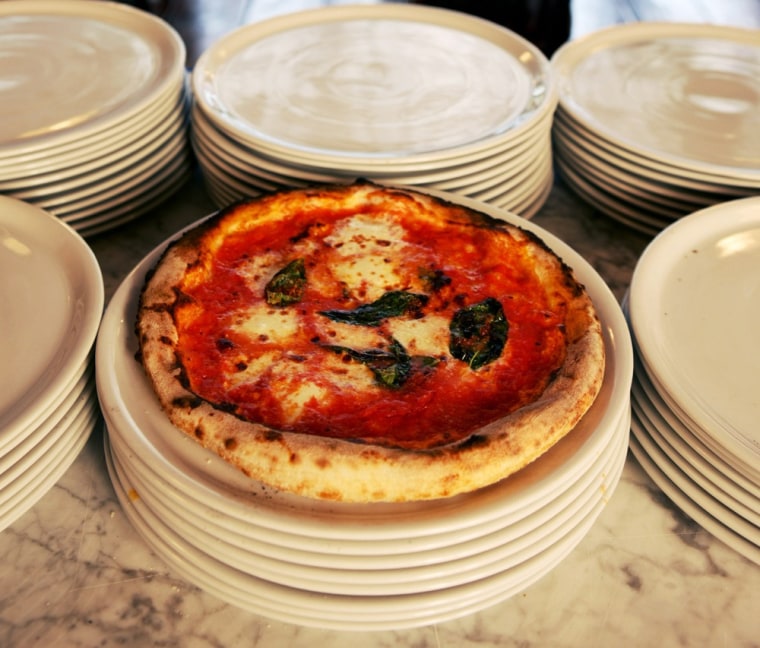Thick or thin? It’s a polarizing topic for many Americans.
It ranks right up there with the debate over which city has the coolest live music scene or the best-looking locals. People can get downright riled up over which city has the best pizza — and whether that pizza should be thin like New York’s or thick like Chicago’s.
Slideshow: America's best cities for pizza
“Chicago-style pizza beats New York pizza any day,” says John Vakidis, a Dallas-area sales consultant who grew up eating Chicago-style in his father’s pizzeria. “The crust has more flavor, and people would drive 50 miles to eat it. Most New York–style pizza tastes like cardboard, and I wouldn’t drive five minutes for it.”
Them’s fighting words to millions of New Yorkers and other folks who prefer their pizza East Coast–style. “Both styles have their merits,” concedes Seattle photographer Alex Hayden, who used to live in Manhattan. “But New York’s is obviously better.”
No surprise, New York and Chicago tangled for the Best Pizza award in this year’s America’s Favorite Cities survey, in which Travel + Leisure readers voted on the best qualities of 35 metropolitan areas across the U.S.
No doubt, everyone has an opinion on pizza. Americans spent $36 billion on it in 2009, according to the trade magazine PMQ Pizza, and the big pizza chains account for only about 40 percent of the business. That means there are still plenty of small chains and mom-and-pop pizzerias out there, offering local flavor and inspiring fierce loyalties.
Of course, some people swear by different styles, like the pizza squares found in Detroit, or the unique Neapolitan that originated in New Haven. (To be fair, in a strict contest over pizza, New Haven would likely have been a contender, but the Connecticut city wasn’t an option in our AFC survey.)
And one American region that has a pizza named after it — Hawaii — ranked at No. 33 out of 35 in the pizza survey, implying that the pineapple-and-Canadian-bacon pizza has lost its island magic. Faring even worse, however, were Santa Fe and Memphis — the latter, perhaps, channeling all its energies into that legendary barbecue.
But when we looked at the top 20 pizza cities, we didn’t find towns that merely picked sides in the New York–or–Chicago debate. Rather, we saw towns with a reputation for neighborhood restaurants, or a lot of college kids, or just a history that includes lots of Italian immigrants, who brought pizza to the U.S. back in the 19th century.
We also saw some cities on the cutting edge of the culinary scene. “Pizza is really changing, thanks to an artisan movement,” says Peter Reinhart, a cooking instructor who launched pizzaphile site PizzaQuest and wrote "American Pie: My Search for the Perfect Pizza." “The focus has really shifted to the crust, creative toppings, and local ingredients.” Providence (No. 3), for instance, is the birthplace of grilled pizza. And then there’s dark-horse Phoenix (No. 11), where artisan-style, thin-crusted Pizza Bianco regularly has lines out the door. “People go there and say, ‘Wow, I never knew pizza could be that good,’” Reinhart says. “It’s a new paradigm.”
But plenty of pizza lovers still go old school: those basic, foldable slices of New York style, or the rich, deep-dish Chicago pizzas. Reinhart refuses to take sides too much. “Some people say that deep-dish is more of a casserole than pizza,” says Reinhart. “But who cares? It’s still really good.”
